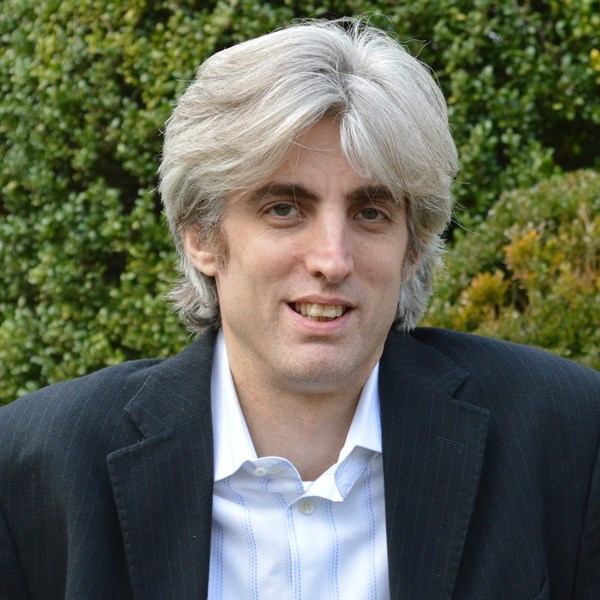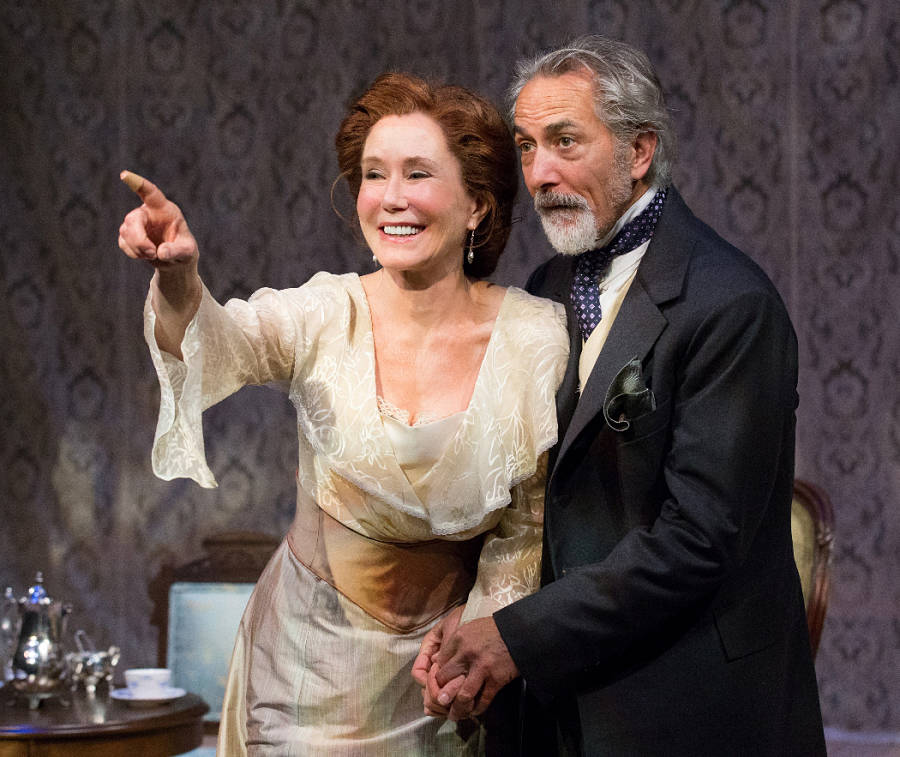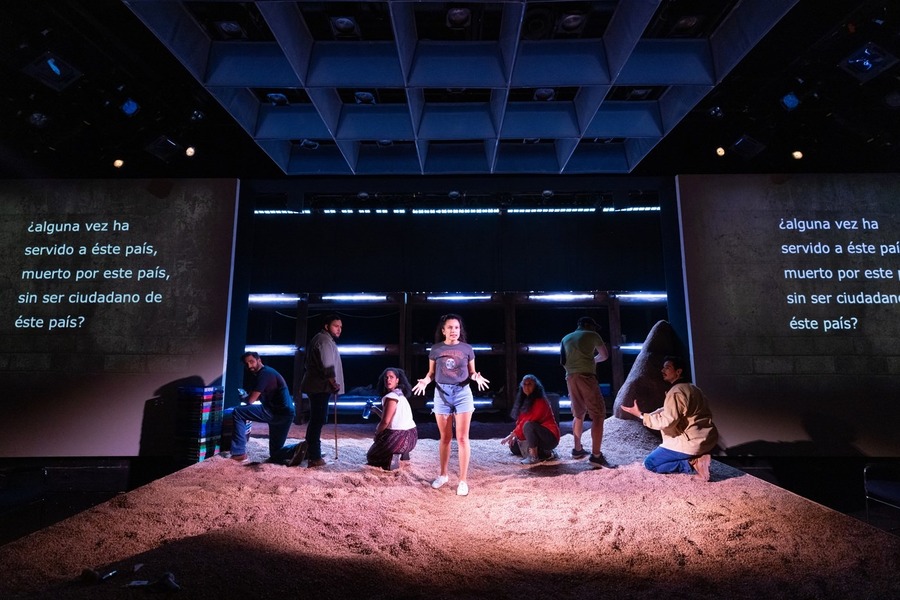MALVERN, PA.: Nestled among lush foliage on Conestoga Road in a relatively affluent borough that serves as the headquarters for the investment management firm the Vanguard Group and the electronics manufacturer Vishay Intertechnology, People’s Light has two theatres (the 140-seat Steinbright Stage and the 340-seat Leonard C. Haas Stage) on a campus that also includes an on-site restaurant, the Fern and Fable, and a popular event space, the Farmhouse. In the half century since its founding, the theatre company has developed a loyal local audience as well as a strong reputation in the Greater Philadelphia arts community (and the theatre industry more broadly) for a mix of contemporary and classic work, from memorable stagings of The Winter’s Tale and Our Town to new works like Brian Quijada’s Somewhere Over the Border, Dominique Morisseau’s Mud Row, and bio-musicals like Personality: The Lloyd Price Musical and Lights Out: Nat “King” Cole.
We corresponded recently with producing artistic director Zak Berkman about the theatre’s past, present, and future.
AMERICAN THEATRE: Who founded People’s Light, when, and why?

ZAK BERKMAN: Danny and Meg Fruchter, Dick Keeler, and Ken Marini founded People’s Light and Theatre in 1974. Our first home was in Strode’s Mill. We soon moved to historic Yellow Springs before relocating to our current seven-acre campus in Malvern. The origin story could be its own epic drama, as well as a comedy of errors. Hopefully, someday someone will write the book or the Netflix series; it’s that good. When you read the early letters to and from the founders as they broke free from the historic Hedgerow Theatre in Rose Valley, Pa., to launch their own artist-run endeavor, it’s amazing how they capture all the rocket fuel of the time: the idealistic desire, the feelings of betrayal, the struggle for money, the faith in the work, the complex entanglements of friends, lovers, and rivals. While our name was accidental—Keeler’s lighting company was called People’s Light, and the founders added “and Theatre” for their initial incorporation, believing they would eventually change it, but never did—it has proven to be prophetic and a North Star. From the start, our company of artists possessed a “People First” commitment to theatremaking, community connection, and social change. We continue to gather around the campfires they lit 50 years ago.
Tell me a little bit more about yourself and your background.
I had the good fortune of growing up with the likes of Caryl Churchill, Wendy Wasserstein, Alice Childress, Judith Thompson, and Tina Howe sitting at my kitchen table—along with many a soap opera veteran, feminist scholar, and local musician, as well as anti-nuke, pro-choice, and genderful activists of Western Massachusetts. That was my privileged fate as the second child of a beloved dramaturg-professor-playwright and a trailblazing historian-professor-author, who both deeply believe that no one is too young to be engaged in conversations about global politics, equity within education, reproductive freedom, and the essential role artists play in assuring a thriving democracy and vibrant culture.
Given this, it should surprise no one I was a sociology and theatre major at Oberlin College and studied in London. After a decade in New York City writing, directing, working for numerous theatres, and serving as the right hand for Broadway maverick Margo Lion, I co-founded Epic Theatre Ensemble, with its commitment to arts education, community engagement, and cultivating a new generation of theatremakers and theatre lovers. I spent a decade with Epic before my wife (actor Teri Lamm), two (then) small boys, and I moved to Pennsylvania. I joined People’s Light in 2011 as associate artistic director as part of a succession plan designed by the executive artistic director, and my mentor, Abbey Adams. I became producing director in 2013 and producing artistic director in 2022.
What sets People’s Light apart from other theatres in your region?
Location. Location. Location. Situated in the crossroads of suburban, rural, and exurban communities, People’s Light is the only year-round producing theatre of its size and scope in all of Chester County, Pa. Eighty-five percent of our audience comes from a 15-mile radius; Philadelphia is roughly 27 miles away. As a result, we may be the only place our patrons, students, donors, and community partners experience live theatre over the course of a year, or a lifetime. We take that possibility very seriously. Furthermore, our region is politically all over the map. We have a tremendous opportunity to provide shared social, cultural, and educational experiences for people of all ages, backgrounds, and abilities, who, especially these days, find themselves pushed apart from one another due to the forces of polarization, disconnection, and distrust. It’s quite an honor and responsibility.
Tell me about your favorite theatre institution other than your own and why you admire it.
There are so many wonderful theatres in the Philadelphia region (Hello, Arden Theatre, Theatre Horizon, Pig Iron Theatre, the Tony-winning Wilma Theater, and more!). But I am a theatremaker today because of the Royal Court in London, along with two great American institutions of the past: The Lark Play Development Center and Circle Rep. My admiration for the Royal Court is rooted not only in the writers they nurtured and elevated, along with the landmark new plays they produced, but, more importantly, by how they found ways to grow, change, and increase its relevance over time while never losing sight of their reason for being or acting (at least publicly) as if they ever doubted the value of their work. When I studied in London, I would go to the Royal Court to be provoked, to reset my system, and to feel more alive. It’s extraordinary when a place and organization can offer that.
Oh, and can I also say, though it’s not exactly a theatre institution, the West Bank Cafe in New York was one of my favorite hubs for creativity, community, and hope of all time. I am certain more moments of artistic inspiration and alchemy happened over fries and wine at the West Bank than any other joint over the past many decades. I was very sad to see it might close.

How do you pick the plays you put on your stage?
The process is somewhat different for each season, but we have an artistic team that discusses and determines our aspirations and priorities. We consider whether any of our new work, generally from our commission programs, is ready for production; we brainstorm about projects that might feature our company of artists or are strong fits for our resident directors; we look at potential intersections with our education and community programs; and, most of all, we focus on a diverse mix of stories and storytellers. Then we share our top options with staff across departments for their feedback and dive into budgeting implications. It’s a lengthy, multidimensional endeavor that often has sudden twists and turns along the way, such as the time we rapidly put together a production of Emily Mann’s adaptation of The Cherry Orchard with Mary McDonnell, David Strathairn, and numerous company artists two days before we needed to finalize the season. It can be a bit of a mind and heart blender experience, and often insomnia-inducing, but we always manage to arrive at a collection of plays and musicals that are distinctive and purposeful.
What’s your annual budget, and how many artists do you employ each season?
Our annual budget is roughly $6.5 million, and we employ approximately 200 artists each season. This includes seven to nine productions annually, our Flight Night series, touring programs, a wide range of new-play commissions, residencies, and workshops, as well as teaching artists engaged in our education programs.
How has People’s Light fared since the end of the COVID lockdown?
It’s certainly been a challenge for our finances and our spirits. At the same time, it’s been a vitally important and transformative period in our history. As with so many theatres near and far, the rise in costs, the reduction in reliable earned and contributed income, and all the various uncertainties and changes have made the financial landscape far more treacherous. It has also required a new kind of attention and care regarding our organizational culture. We have had to say goodbye to a number of people, adjust the way we work, approach programming and the use of our spaces in new ways. All the while, this time has also pushed us to become much more responsive to our communities, as well as more inclusive of a far broader range of interests and impulses. We have recognized our opportunity to transition from a hidden gem of a regional theatre into the kind of live arts hub and “third place” our region craves and deserves.
How has your theatre responded to calls for racial justice and more equitable working conditions that have arisen with new urgency in the past few years?
A number of years before the pandemic, before the renewed calls for racial justice, the further reckonings from the #MeToo movement, and more intensified attention to working conditions for theatremakers of all disciplines, People’s Light was already in the midst of a significant self-appraisal and transformation brought on by serious missteps and areas of neglect. Elevated by our participation in TCG’s second EDI cohort, emboldened by a full staff and board weekend retreat with Carmen Morgan and Lydia Garcia from ArtEquity, further education through our in-depth partnerships with ArtReach and the Temple University Institute on Disabilities, and sustained through staff and trustee working groups focused on various areas of equity, diversity, and accessibility, we took stock of where we needed to grow, took steps to improve our practices and outcomes, supported each other as we attempted, failed, attempted, succeeded, failed again, attempted, and continue to try—knowing full well this is an ongoing, never-ending effort and endeavor. In the wake of George Floyd’s murder and We See You White American Theater, we increased the ways we invested in, collaborated with, and celebrated BIPOC artists (including a series of commissions for short films during the COVID lockdown), at the same time as we better defined what it meant to be an anti-racist institution. We explored how to go beyond the potential lip service of a land acknowledgement, established new standards of conduct, and worked to decolonize our handbooks. We had already moved away from 10-out-of-12s. We expanded our accessibility programs, including relaxed performances for all productions, and pioneered the use of smart caption glasses. We renovated the backstage area of our larger theatre to be more gender-inclusive, incorporated the use of pronouns throughout the organization, conducted numerous training workshops in the realm of conflict resolution, social positioning, use of language, gender representation, and much more.
When I became producing artistic director in 2022, one of my first acts was to greatly diversify our artistic staff, knowing this group drives the work on our stages, in our classrooms, and community centers, thereby shaping the trajectory of our organization through the relationships we develop with future collaborators, patrons, partners, and donors. I am privileged to work with people for whom this examination and endeavor is joyful, rigorous, continually self-reflective, and kind.

What show are you working on now? Anything else in your season you’re especially looking forward to?
We kick off our 50th season with The Porch on Windy Hill, a beautifully tender new play with music co-created and performed by David Lutken, one of our company members. It is a co-production with Merrimack Theatre and Weston Playhouse, featuring a cast of three actor-musicians. I suspect it will be performed all around the country. I’m also very excited to premiere our newest holiday panto, Peter Panto, created by Jennifer Childs and Alex Bechtel, the same team that made our very successful Alice In Wonderland, both directed by our company member, Bill Fennelly. We have commissioned, developed, and premiered original British-ish musical pantos for two decades now, and they have become a hugely successful holiday tradition for families all across our region. I find Jen and Alex’s subversive and wildly silly spin on Peter Pan especially delicious.
What’s the strangest or funniest thing you’ve ever seen or put on your stage?
Gosh, most of these things were not intentional. Nothing like a broken turntable, an actor stuck in traffic, or a critical prop stuck in a tree to cause something to happen onstage that causes total meltdowns in hilarity. I guess my favorite is when a flu ran through one of our holiday pantos, causing numerous actors to go down. One of our healthy actors was a puppeteer and offered to have one of their puppets play one of the characters. After figuring out how to make sure this was permissible (imagine the signage: “At this performance the role normally played by Actor will be played by Puppet”), they went on and everyone on our staff snuck into the theatre to watch. They were brilliant. The show went incredibly well. But I very much hope we never have to do that again.
What are you doing when you’re not doing theatre?
When I’m not immersed in one aspect of theatre or another, I treasure time with my family, including our two sons, who are 19 and 16, and becoming very independent. We listen to a lot of music, from Anaïs Mitchell and Ani Difranco to Future and Travis Scott, and my wife and I sneak in A-ha and Duran Duran whenever we can. Also, go Phillies! (And Red Sox!)
What does theatre—not just your theatre, but the American or world theatre—look like in, say, 20 years?
Indulge me for a moment. I have a mini-TED Talk about the history of daytime soap operas and how this relates to the state of theatre today. In it, I describe how generational and gender shifts in approaches to work, interruptions of business, seismic changes in technology and the proliferation of new platforms for storytelling, challenges in effectively tracking audience behavior, as well as some poor and high-risk artistic choices, all contributed to the demise of soaps as we knew them during ABC’s “Love In the Afternoon” era. Nevertheless, the core components of daytime dramas can now be found throughout the stream-osphere. The success of Game of Thrones and so many binge-y series use cliffhangers, flashbacks, love triangles, multigenerational entanglements, and back-from-the-dead villains and heroes to grab the audience’s attention and inspire loyalty over time. Daytime isn’t dead; it just came back as a flock of super-shows on HBO Max, Hulu, and Netflix.
Similarly, I imagine in 20 years the American theatre will look radically different from today. Many of our current institutions may close. The ways we work will be transformed. But the core elements—what we love about live theatre, the collective risk-taking innovation of it, the immersive wonder of it, the civic necessity of it—won’t disappear. There will be such a craving for stories told by living, full-body human beings walking emotional tightropes without any nets, unaltered by AI. Theatre will be the spot where humans can trust they are encountering actual other humans, all around them.
A theatre will be any place that elevates “natural intelligence” and the stories that emerge from truly human collaborative exploration and enterprise. Theatres will be places that galvanize people across the country to look at ourselves in our authentic skins, with our authentic voices, and reflect on our interconnectedness, the vitality of three-dimensional tactile lives gravitating toward one another in beautiful, absurd, horrifying, and hilarious ways. It may be in different spaces, using different technology or a lot more fire and food; it may be in mash-up languages. But I have no doubt that the flowers today that seem to be losing their bloom or struggling to stay upright against the constant storms will ultimately pollinate our future social, cultural, and civic lives in ways we can’t yet imagine.


